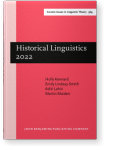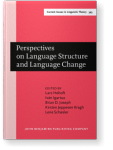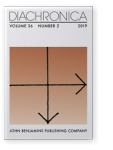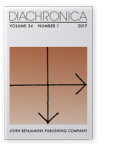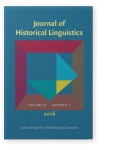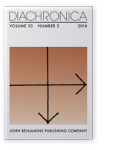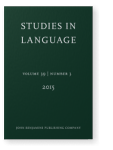Iván Igartua
List of John Benjamins publications for which Iván Igartua plays a role.
Book series
Title
Perspectives on Language Structure and Language Change: Studies in honor of Henning Andersen
Edited by Lars Heltoft, Iván Igartua, Brian D. Joseph, Kirsten Jeppesen Kragh and Lene Schøsler
[Current Issues in Linguistic Theory, 345] 2019. ix, 419 pp.
Subjects Historical linguistics | Theoretical linguistics
2019 Perspectives on language structure and language change: An introduction Perspectives on Language Structure and Language Change: Studies in honor of Henning Andersen, Heltoft, Lars, Iván Igartua, Brian D. Joseph, Kirsten Jeppesen Kragh and Lene Schøsler (eds.), pp. 1–10 | Chapter
2019 Loss of grammatical gender and language contact Diachronica 36:2, pp. 181–221 | Article
Despite its alleged relative stability, grammatical gender has nevertheless been completely lost in a number of languages. Through the analysis of three case studies (Afrikaans, Ossetic, and Cappadocian Greek) and a brief survey of similar developments in other languages, this article… read more
2019 Approaching the typology and diachrony of morphological reversals Perspectives on Language Structure and Language Change: Studies in honor of Henning Andersen, Heltoft, Lars, Iván Igartua, Brian D. Joseph, Kirsten Jeppesen Kragh and Lene Schøsler (eds.), pp. 81–106 | Chapter
Inverse marking in inflectional morphology represents a particular type of mismatch between morphological form and syntactic or semantic function. This kind of morpheme interchange has been found in several languages thus far, but it is not usually included in morphological studies. There have been… read more
2017 Proto-Slavic inflectional morphology: A comparative handbook . By Thomas Olander Diachronica 34:1, pp. 110–116 | Review
2016 Review of Krinková (2015): From Iberian Romani to Iberian Para-Romani varieties Diachronica 33:3, pp. 412–416 | Review
2015 Diachronic effects of rhinoglottophilia, symmetries in sound change, and the curious case of Basque Studies in Language 39:3, pp. 635–663 | Article
The particular affinity linking glottality and nasality to each other, a connection which is grounded both on articulatory and acoustic bases, seems to be responsible for various phonetic phenomena in different languages. In sound changes associated to what has been termed rhinoglottophilia… read more
